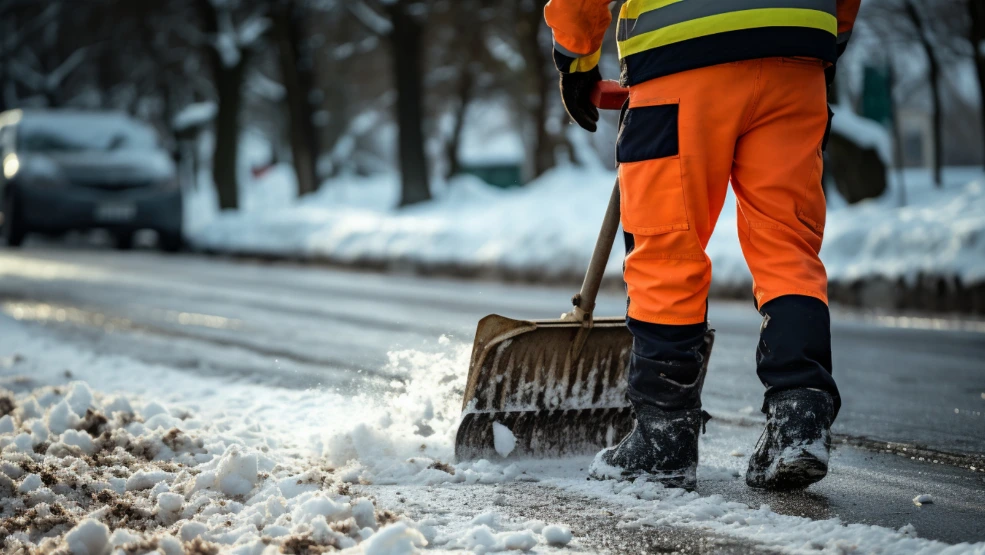Running a successful snow removal business is challenging. Not only do you have to be prepared to work in harsh weather conditions, but you also need to keep your customers satisfied and while staying competitive at the same time. It is all about striking a perfect balance between profitability and competitiveness, much like navigating a snow-covered road.
If not done properly, you may lose money by the minute, leaving yourself vulnerable to unexpected cash flow issues. By accurately calculating and setting prices for your services, you can ensure that your business is is extremely profitable. In this article, we’ll delve into the key strategies and considerations you need to know to price services effectively, ensuring profitability while staying competitive in the marketplace.
Understanding your costs
Running a snow removal business is a delicate act of balancing team management, competitiveness, and profitability. Having a comprehensive understanding of the costs involved gives you a clear picture of your cash flow—enabling you to set understandable and transparent pricing for your services and maintain a careful balance between profitability and competition.
For instance, consider the cost of maintaining heavy-duty snowplows or compensating your technicians for their efforts in battling extreme weather conditions. Understanding these expenses enables you to accurately calculate the total costs and set prices that ensure profitability without compromising on service quality.
You must be wondering how to calculate the right price for your business. Well, here is a formula to help you out:
(Your hourly rate) ÷ (60 minutes) x (# of minutes you’ll spend at the property) + (overhead and materials) x (profit margin)
Let’s break down every formula component to get a clear picture of how this works.
Your hourly rate—is the amount of money you charge per hour for your services. You can determine your hourly rate by considering your costs, such as labor, equipment, fuel, and insurance, as well as the market value of snow removal services in your area. Divided it by sixty (÷ 60) This converts your hourly rate into a per-minute rate. Multiply it with the minutes you’ll spend at the property This is the estimated amount of time it will take you to complete the job. You can estimate this by considering the size of the property, the amount of snow, and the type of equipment you will be using. Add overheads and material cost and multiply it by your profit margin (+ (OH & M) x (PM)) This component calculates the amount of money you need to add to your base price to cover your overhead costs and generate a profit.
Determine your labor costs
Figuring out your labor costs is the first step in determining the right pricing for your snow removal services. You can calculate your labor costs by finding out the cost of the square footage of the plowing area and estimating how long the snow removal job will take. Then, apply this formula to calculate the total labor cost for a snow removal job: – Hourly rate x # of workers x # of hours.
For instance, let’s say you have a service appointment to plow a large commercial parking lot. It takes 2 hours, and two snow removal contractors charge $25 per hour. Now substitute the components to the formula: $25 per hour x 2 workers x 2 hours = $100 (total labor cost)
Calculate your overhead rate
Your overhead costs are the operating expenses required to run your snow removal business, including:
- Snow removal equipment (such as salters, plows, and snow blowers)
- Snow removal insurance
- Gas and vehicle maintenance
- Employee wages
- Snow removal advertising costs
- Snow removal business software
To calculate your overhead rate, start by adding up all of your overhead costs for a given month. Then, divide your monthly overhead amount by your total sales for the same month. Multiply it by 100 to get a percentage. Here’s what that formula looks like:
(Total monthly overhead costs ÷ total monthly sales) x 100
Apply your markup
Your markup is the additional amount you charge after covering your costs so you can turn a profit from your services. The percentage of revenue that you take home after applying markup is your profit margin. Here’s how markup should factor into your pricing:
All job costs + markup = total price for the job.
Let’s say your overhead, labor, and material costs add up to $1,400, and your ideal profit margin is 30%. That means the cost of your job should make up 70% of the total price.
To calculate your total price, use the formula:
Total price = Cost ÷ (1 – profit margin)
So, the total price you should charge to achieve a 30% profit margin will be:
Total price = $1,400 ÷ (1 – 0.30) = $1,400 ÷ 0.70 = $2,000
You’ll need to charge $2,000 to reach a 30% profit margin. That means you’ll charge a markup of $600 on top of your cost of $1,400.
Choosing a pricing model
Selecting the appropriate pricing model is much like choosing the right equipment for the job. Each model—whether it’s charging per hour, per inch of snow, or push—comes with its unique set of advantages and limitations, and the right choice is influenced by different factors.
Charging per hour is a straightforward method. It offers a direct correlation between time spent on the job and compensation. This model is simple to understand for both the service provider and the client. However, it might create uncertainties during unpredictable weather conditions or when the job takes longer due to unforeseen challenges.
On the other hand, charging per inch of snow removed provides a clear, measurable metric directly linked to the work performed. It offers transparency and predictability in pricing, aligning with the actual service provided. Yet, this model might pose challenges when snowfall levels vary significantly, leading to fluctuating costs.
The per-push model bases pricing on the number of times a service provider clears the area, offering clarity in terms of frequency and service. However, it might not accurately represent the effort involved in removing varying depths of snow or complexities in certain areas.
Understanding the type of customers you aim to target is key. Some might prefer straightforward pricing for budgeting purposes, while others might value the flexibility of paying based on the snow depth or frequency of service.
Researching your competition
Researching your competition is like surveying the landscape before clearing it. Knowing your competitors’ rates is crucial, but avoid the temptation to simply undercut their pricing. This is a trap, which could lead to long-term profit losses. Check competitors’ websites and social media, and reach out to potential customers for insights on market rates and customer expectations. Understanding not just the prices but also the unique value your service offers is key in positioning your pricing strategy effectively.
Gathering data about competitors’ pricing helps in setting a competitive yet profitable pricing structure. Aim to offer value and quality in line with customer expectations instead of simply mirroring the competition. This approach ensures a sustainable business while meeting the needs of your target customer base.
Setting your prices
When determining prices for snow removal services, understanding your target profit margin is crucial. This margin serves as the foundation for your pricing strategy, which combines costs, competition rates, and the preferences of your target market. The aim is to strike a balance that ensures your prices are competitive yet profitable. Flexibility is key—be ready to adjust prices as the market landscape evolves, allowing you to stay responsive to changing conditions and maintain a successful business in the snow removal industry.
Offering discounts and promotions
In the snow removal business, attracting new customers and retaining existing ones can be achieved through discounts and promotions. Offering early booking discounts, multiple service deals, and referral programs serve as powerful incentives that attract new clients and encourage loyalty among current customers. Creativity is key in designing these discounts and promotions tailored to resonate with your audience, fostering long-term relationships, and enticing new business, all while providing valuable cost savings or benefits to your clientele.
Adjusting your prices as needed
Costs and competition can fluctuate, much like navigating a blizzard. Factors such as varying fuel prices, equipment maintenance costs, changes in the competitive landscape, and shifts in customer demand during different winter seasons directly influence expenses and pricing strategies. Keeping a vigilant eye on these factors allows for informed decisions about necessary price adjustments, ensuring a competitive edge.
Transparent communication with customers regarding any pricing changes is crucial. Explaining the reasons behind adjustments—whether due to increased costs or an effort to enhance service quality—builds trust and reliability. Adapting to these fluctuations while maintaining open and honest communication helps to establish stronger customer relationships and sustain a successful snow removal business.
Conclusion
To sum up, pricing in a snow removal business requires a strategic approach. By understanding costs, setting prices wisely, and offering appealing incentives, you can pave a successful path through the competitive and fluctuating landscape of the snow removal industry.





